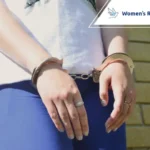Imagine visiting your young niece, recently placed in a foster home after being separated from her birth parents. As a concerned relative, you’re allowed supervised visits but have no legal right to remove her without court approval. At first, everything seems normal — the foster family is welcoming, the home appears safe, and she smiles politely. Yet with each visit, small changes unsettle you: she becomes quieter, flinches at sudden movements, and hesitates to make eye contact.
Deep down, you sense something isn’t right.
Sadly, these subtle warning signs can point to something much more serious. Child abuse — whether emotional abuse, physical abuse, or even sexual abuse — often goes unnoticed in foster care settings. Foster children, some of the most vulnerable children in our society, deserve better. Recognizing early signs could mean protecting a child’s future from lasting harm.
What Is Child Abuse in Foster Homes?

When discussing what is child abuse within foster homes, it’s essential to understand that abuse can take many forms, not all of which leave visible scars. Foster children are at heightened risk because they may already be coping with trauma, making them particularly vulnerable to manipulation or harm by foster parents or other caregivers.
According to the Child Welfare Information Gateway, children in foster care report higher instances of abuse compared to the general child population, with emotional abuse and neglect being among the most frequently cited forms.
Here’s a breakdown of the most common forms of abuse foster children may experience:
| Type of Abuse | Definition | Examples |
| Emotional Abuse | Persistent behaviors that harm a child’s self-worth or emotional well-being. | Verbal insults, humiliation, threats, isolation. |
| Physical Abuse | Intentional use of force that results in bodily injury or trauma. | Hitting, slapping, burning, or excessive physical punishment. |
| Sexual Abuse | Involvement of a child in sexual acts, exploitation, or inappropriate sexual contact. | Unwanted touching, assault, exposing a child to sexual materials, and coercing sexual acts. |
| Neglect | Failure to provide for a child’s basic needs, including food, shelter, healthcare, education, and emotional support. | Inadequate supervision, malnutrition, untreated medical issues, or unsafe living conditions. |
Each form of child abuse can have devastating short-term and long-term impacts on a child’s mental health, physical health, and overall well-being. Identifying the specific types of abuse is the first step toward ensuring children in care are protected from future harm.
Abuse in Foster Homes: What the Statistics Reveal
Foster care is meant to protect vulnerable children, yet national data exposes alarming risks. According to the Children’s Bureau under the U.S. Department of Health and Human Services, over 10% of substantiated reports of child abuse involve children in foster care placements.
Further, research from the National Center for Biotechnology Information (NCBI) shows that foster youth are 2 to 4 times more likely to experience emotional, physical, or sexual abuse compared to children raised in biological homes.
These abuse in foster homes statistics are a sobering reminder that despite good intentions, the foster care system can leave children exposed to forms of abuse. Understanding the scale of the problem is crucial to advocating for fundamental reforms and ensuring the safety of foster youth.
5 Warning Signs of Child Abuse in Foster Homes
Recognizing signs of child abuse early can protect children from lasting trauma. Watch for these red flags in foster care settings:
1. Unexplained Injuries
Major red flags are frequent bruises, burns, or broken bones without a clear explanation. While accidents happen, injuries in different healing stages suggest possible physical abuse. If the child’s explanation feels rehearsed or inconsistent, it’s crucial to question more deeply. Immediate attention could prevent future harm.
2. Sudden Behavioral Changes
A once lively child who now shows withdrawal, fear, or aggression may be reacting to emotional abuse or trauma. Sudden shifts in mood, sleep patterns, or school performance often signal something is wrong. Behavioral issues are warning signs that a child may feel unsafe.
3. Fear of Going Home
If a foster child fears or dreads returning to their foster family, take it seriously. Homes for children should be safe havens, not sources of anxiety. Persistent fear often points to forms of abuse that need immediate investigation.
4. Regression to Younger Behaviors
Suddenly wetting the bed, thumb-sucking, or displaying baby talk can signal emotional distress. Regression is a coping response to trauma, like childhood sexual or physical abuse. It’s often a child’s way of expressing fear when they can’t put their experience into words.
5. Reluctance to Talk About Foster Parents
Children avoiding conversations about foster parents may fear punishment or blame. In cases of foster home abuse, silence often masks more profound suffering, including domestic violence or sexual violence. Creating a safe, nonjudgmental space encourages them to open up.
What to Do If You Suspect Abuse
If you notice warning signs of child abuse in a foster home, taking immediate action can protect a vulnerable child from further harm. Here’s what you should do:
- Document Everything: Write down observations of injuries, behavioral changes, statements from the child, and anything unusual. Photos (where appropriate and safe) can also be critical evidence.
- Report to Child Protective Services (CPS): Contact your local CPS office or call the California Child Abuse Hotline at 1-800-540-4000. You do not need proof; reasonable suspicion is enough to file a report under California law.
- Seek Medical Attention if Necessary: If the child has visible injuries or severe emotional distress, seek medical evaluation immediately. Medical records can serve as robust evidence of neglect or abuse.
- Contact Our Legal Advocate: Speak with our experienced attorney in the foster care and child welfare systems. Our Legal advocates can work to remove the child from the dangerous environment and hold those responsible accountable.
- Follow Up: Stay involved. Request updates from CPS or your attorney and ensure the child receives proper placement, support, and mental health services to heal from their trauma.
Acting quickly can make the difference between a child continuing to suffer and a child finding safety and hope in a loving home.
How Legal Help Can Protect a Child’s Rights
When signs of foster home abuse or other forms of child abuse arise, immediate legal intervention can save a child’s life. A dedicated attorney specializing in foster care cases understands how to navigate complex child welfare systems, advocate for emergency placement changes, and pursue justice against negligent foster parents or agencies.
Our compassionate and experienced legal team at Women’s Rights Group is committed to protecting vulnerable children. We work swiftly to gather evidence, file necessary legal motions, and hold responsible parties accountable, ensuring no child remains in a dangerous situation longer than necessary.
Seeking legal help is not just about stopping abuse—it’s about ensuring long-term safety, securing permanent homes, and promoting better outcomes for children. Your action today can give a child a safer tomorrow.
Contact Women’s Rights Group today for a free, confidential case review.






